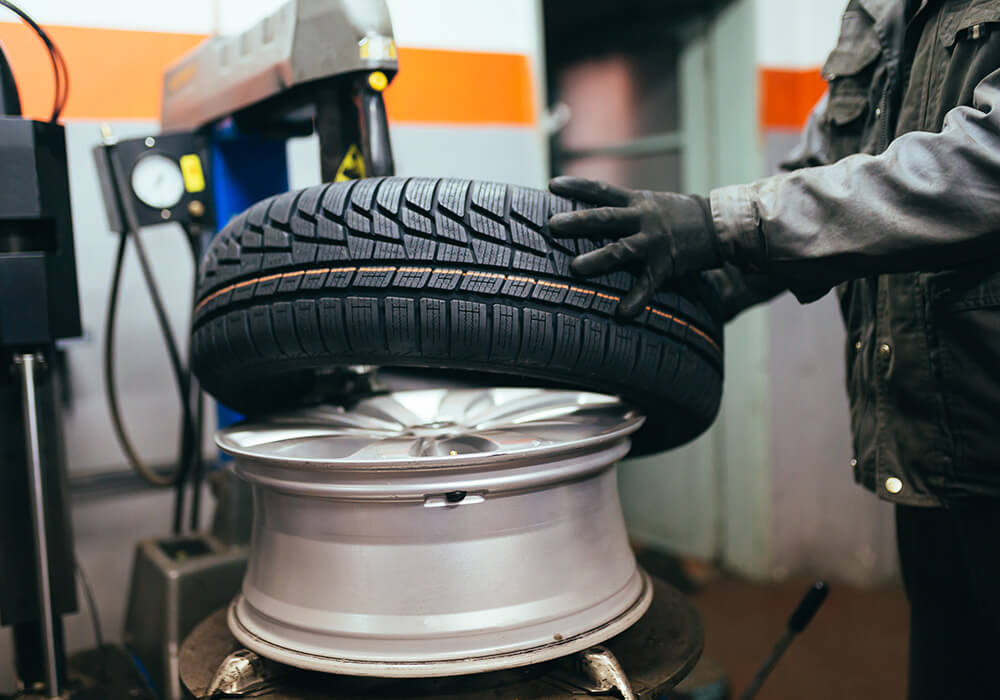Tire Service: The Effect of Climate Condition
When it involves ensuring optimum performance and safety when driving, understanding the impact of climate conditions on tire service is critical. From scorching heat to icy roadways, each weather component can dramatically affect tire functionality and general driving experience. By delving right into the impacts of varying climate condition on tires, drivers can get beneficial understandings that may enhance their lorry's efficiency and durability. In this conversation, we will certainly explore the elaborate partnership in between climate condition and tire solution, shedding light on the importance of weather-specific tire upkeep methods and considerations.
Heat and Tire Performance
When exposed to heats, tires experience changes in efficiency that can considerably affect automobile safety and security and handling. The heat generated from extended driving or heat problems creates the tire rubber to soften, bring about lowered step life and enhanced wear. As the rubber ends up being softer, the tire's grasp when traveling decreases, impacting braking distances and general grip. In severe cases, excessive heat can also trigger tire blowouts, posing a severe safety and security risk to the lorry and its residents.

Winter Impacts
Cold weather condition conditions can have a significant influence on tire performance and safety. As temperature levels decrease, tire rubber can set, causing reduced traction on icy or snow-covered roadways. In winter, tires might additionally lose atmospheric pressure extra quickly, which can affect handling and gas efficiency. Additionally, cool temperatures can cause tire sidewalls to tense, enhancing the risk of damages from splits or various other road dangers.
To reduce the results of winter on tires, it is important to regularly inspect tire stress and inflate them to the supplier's suggested levels. Using winter season or all-season tires created for cold weather conditions can also enhance grip and hold on icy or snowy roadways. Proper tire maintenance, consisting of regular inspections for wear and damage, ends up being a lot more vital throughout cooler months to make sure optimum performance and safety.
Rainy Conditions Effect
Throughout wet conditions, tire efficiency and safety and security can be considerably affected by the wet road surfaces and decreased exposure. The walk pattern of tires plays a vital role in preserving traction on wet roads. Tires with worn-out treads are much more susceptible to hydroplaning, where a layer of water develops in between the roadway and the tire surface area, causing loss of traction. To combat this, chauffeurs should routinely check their tires for sufficient tread deepness and consider spending in tires especially created for wet problems.
In addition, stormy weather can also lower presence, making it challenging for drivers to see the road ahead plainly (GMC Tire Service). In such conditions, it is important to change driving speeds accordingly and preserve a safe complying with range to allow for unexpected stops. Properly filled with air tires can additionally help in maintaining control on wet roadways by providing much better handling and grip
Snow and Tire Safety
Snow-covered roads posture distinct obstacles for chauffeurs, stressing the significance of correct tire choice and maintenance. When driving in snowy conditions, having the right tires can make a substantial difference in security and efficiency. Winter tires are created with special rubber compounds and walk patterns to supply far better traction on snow and ice contrasted to all-season tires. The much deeper treads and sipes of winter months tires aid grip the road much better, minimizing the threat of gliding and sliding.

It see this here is vital to comply with maker guidelines when using and mounting tire chains to stop damages to the tires and lorry. By choosing the ideal tires, preserving proper rising cost of living, and taking into consideration additional grip help like tire chains, vehicle drivers can boost their security when navigating snow-covered roadways.
Weather-Related Tire Maintenance
When confronted with different weather condition conditions, proper tire maintenance becomes a crucial facet of automobile safety and efficiency. Weather-related tire upkeep encompasses an array of methods targeted at ensuring ideal tire feature and longevity in different weather circumstances. One vital aspect of weather-related tire upkeep is tire pressure regulation. Rising and fall temperatures can cause tire pressure to vary, affecting traction and fuel efficiency. Frequently readjusting and inspecting tire pressure according to manufacturer referrals is essential for risk-free driving in transforming weather. Additionally, tire step deepness plays a considerable function in dealing with various weather elements. Tires with adequate tread deepness supply much better grip on wet or icy roadways, lowering the danger of skidding or hydroplaning. Evaluating tire walk on a regular basis and changing tires when walk wear gets to a certain depth is crucial for keeping grip and security in unfavorable weather. By prioritizing weather-related tire maintenance, motorists can improve security, boost lorry efficiency, and extend the lifespan of their tires.
Final Thought
In verdict, weather condition problems have a substantial impact on tire efficiency and safety and security. From heat impacting tire stress and put on to chilly weather reducing traction, it is crucial to take into consideration the weather when preserving and making use of tires.
In this conversation, we will certainly check out the detailed connection in between weather conditions and tire service, shedding light on the relevance of weather-specific tire upkeep techniques and factors to consider.
